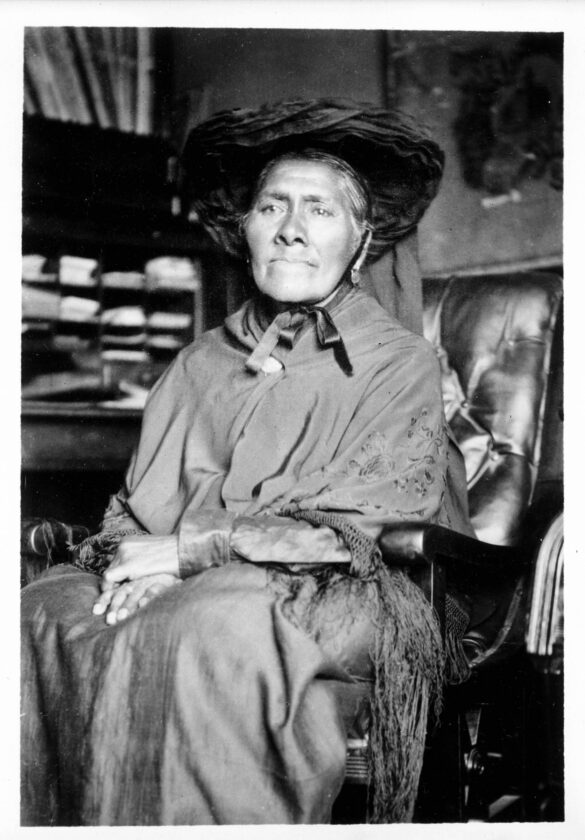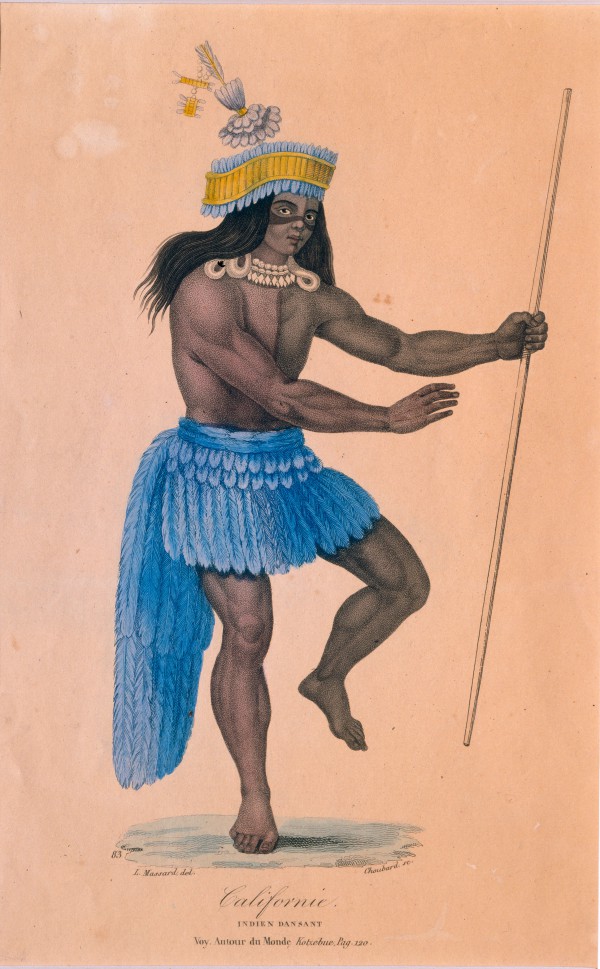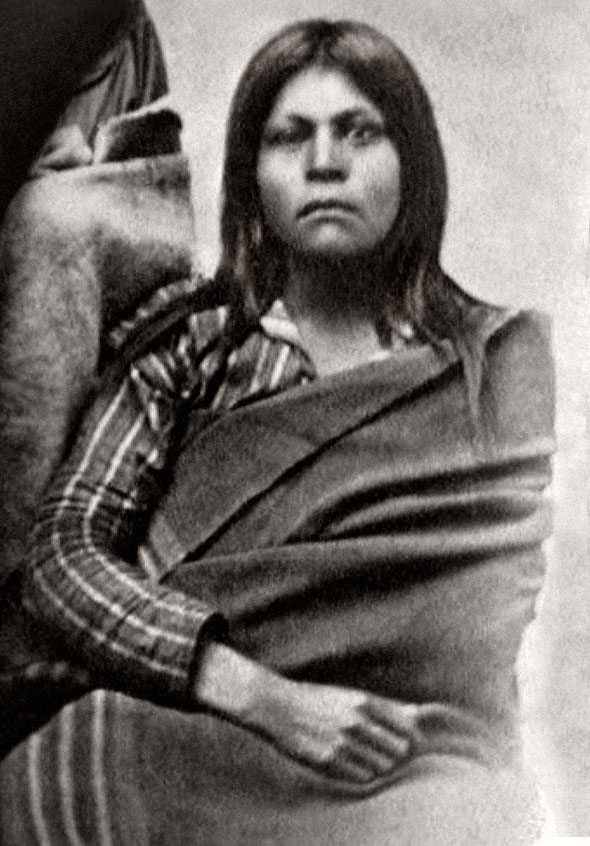Indigenous Peoples: Ballona Wetlands - Ballona Discovery Center in Playa Vista
Introduction
Two thousand years ago the people now identified as the Kizh-Tongva-Gabrielino indigenous
tribe thrived in the Los Angeles Basin of California. Occupying approximately one hundred villages, the Uto-Aztecan speakers immigrated to the area from the desert east of Los Angeles and displaced the Hokan speakers living there. Those people likely included the Chumash who settled the coastal valleys from Calabasas to Monterey. These tribal groups lived in tule dwellings, navigated the coastal waters in their large tar-caulked canoes (tomols), and traded goods to the east, including tar (asphaltum), shells, seeds, fish, steatite, and furs, with the Pueblo people.
In 1542, the San Salvador, flagship of the Iberian explorer Juan Cabrillo, sailed into a bay the explorers called the Baya de los Fumos (probably Santa Monica Bay). Cabrillo’s expedition did not linger but proved a harbinger of future European exploration. In I771, the Spanish returned intent on forestalling other European encroachment in New Spain. With their Indian allies, soldiers for the presidio, and Franciscan padres, they settled and built an outpost they called Mission San Gabriel de Arcangel, San Gabriel become the fourth mission in a string of missions, that would dot the coast from Baja to north of San Francisco.
Spanish explorers favored expansion of the empire, accumulation of wealth, and salvation for those they encountered, the latter secured by baptizing the local people Roman Catholic. Within a few generations, the natives were bound labor at the missions, weakened by disease, and forced to forego their cultural ways. Despite the odds, the Tongva, as well as other indigenous tribes, proved very resilient, teaching the Spanish how to survive in the new world and becoming quick
learners of the Spanish ways. This intellectual adaptability helped to create the culture of California.
Espiritu Leonis
 Rising in the Los Angeles River rises in the Simi Hills and Santa Susana Mountain in a place called Arroyo Calabasas. This area defined the geography between Kizh-Tongva people to the south and the Chumash tribes to the north. The land in the western San Fernando Valley belonged to the San Fernando Mission, founded in 1787 and the 17th of the Alta California Missions. In 1845, the acting governor of California, Pio Pico created a 1100-acre Mexican land grant from a portion of the mission land. Unusually, Rancho El Escorpion, was granted to three Native Americans: Odón Chijulla, Urbano Chari and the latter’s son, Manuel.
Odón was the chief or wot of the Chumash village Humaliwo (Malibu). He married Juana Eusebia from the Tongva rancheria called Kuruvungna in what is now Santa Monica. In May 1836, their daughter Maria de (Espiritu) Chijulla, was born; she would be raised at the San Fernando Mission.
Rising in the Los Angeles River rises in the Simi Hills and Santa Susana Mountain in a place called Arroyo Calabasas. This area defined the geography between Kizh-Tongva people to the south and the Chumash tribes to the north. The land in the western San Fernando Valley belonged to the San Fernando Mission, founded in 1787 and the 17th of the Alta California Missions. In 1845, the acting governor of California, Pio Pico created a 1100-acre Mexican land grant from a portion of the mission land. Unusually, Rancho El Escorpion, was granted to three Native Americans: Odón Chijulla, Urbano Chari and the latter’s son, Manuel.
Odón was the chief or wot of the Chumash village Humaliwo (Malibu). He married Juana Eusebia from the Tongva rancheria called Kuruvungna in what is now Santa Monica. In May 1836, their daughter Maria de (Espiritu) Chijulla, was born; she would be raised at the San Fernando Mission.
When she was twenty years old, the Mexican American War ceded California to the United States with the Treaty of Guadalupe Hidalgo. The treaty provided for land grants to be honored with the Public Land Act in 1851. In 1876 the patent for Rancho El Escorpion was recognized by the American courts. Perhaps one of the most interesting cultural differences between the Kizh-Tongva people and the Chumash was that the former was a patrilineal culture, while the Chumash were matrilineal. That meant that upon Odón’s death, his eldest daughter, Espiritu, became his heir to the rancho. At the age of twenty, she married Andres Pico’s foreman Juan Antonio Menendez and bore a son, Juan Jose Menendez in 1857.
While Espiritu was growing up, across the Atlantic Ocean in the Basque Pyrenees, another young person was on the run. Although Miguel Leonis’s (1824-1889) family was wealthy and well-respected, he apparently ran a smuggling operation between Spain and France. Whether the authorities pursued him, or his father told him to leave, barely out of his teens, Leonis found himself sheep herding on the rancho next to El Escorpion. Leonis was a big man, over 6’4” with a gift for intimidation. He was illiterate but probably spoke Basque, with a smattering of Spanish and French. By end of the 1850’s, he owned cattle, sheep, land, and the rancho next to El Escorpion, where Espiritu was raising her son as a widow and landowner. By 1860, Leonis and Espiritu became the parents of a little girl, Marcelina Leonis. Although Espiritu owned the land, Leonis took over the rancho by 1871. Since they “married” or contracted in a Gabrielino ceremony the inheritance went to the male partner.
Over the next decade Leonis created an empire of land through bullying, threats, hired guns, outright acquisitions, and thirty lawsuits in the Los Angeles Court. Although the 1880’s drought impacted the rancho and the farmland around the adobe in Calabasas, he was still “El Basquo Grande.” After his daughter died in 1880, his drinking increased, contributing to his being run over by his own wagon on the way home from Los Angeles and causing his death in 1889.
After his death, Espiritu discovered her “inheritance” from her estate, now valued at over $300,000, was a mere $5000. Moreover, Leonis asserted that Espiritu was not his wife, but his housekeeper. Although California maintained its joint property laws from the Mexican period, Leonis had stipulated that his estate was to go to his family, primarily his brothers. Over the years, Espiritu had watched him manipulate the court system. Now she was determined to
contest the will. She filed a motion, hired a lawyer, and spent the next sixteen years fighting her way through the California Supreme Court. The Los Angles Herald avidly followed the case! In 1905, the court ruled that Espiritu was Leonis’s common law wife, making her the first woman to win legal acknowledgement as a common law wife and at a time when Indians had few recognized rights. Once again, she owned her inheritance!
Pictured: There is no date on this portrait of Espiritu Chujilla taken by photographer Charles C. Pierce, but it was probably shot around the time of her legal victory, c. 1905. The caption says only: “Leonis, ‘Spirito’, Indian wife of Miguel Leonis, owner of large [sic] ranch at Lake Elizabeth.” Leonis really did own land as far north as the Lancaster area. His holdings were vast. From C.C. Pierce Collection of Photographs, Huntington Library
Estanislao
 When the Spanish arrived in 1769 to “organize” Alta California into a colony, they failed to recognize that the indigenous people already possessed a significant social hierarchy, with elite men and women in charge of each village and shared resources for all. Since the Spanish imperial infrastructure called for the development of townships in which workers lived, they generally tried to gather the Indians into the missions with a great show of agreement and land cession. In keeping with Spanish governmental policy of the time the missions included the California natives in the mission town council or cabildo. Each Indian village had representatives of their own, and each mission had one or two alcaldes to represent the Indians in the mission. Although the Spanish thought they were imposing a new method of governing, the pattern they established was very similar to the Indian village hierarchy. The Indians understood politics and the many alcaldes became adept in their new role. One such young man was a member of the Lakisamni tribe of the Yokuts, named Cocunuchi. Using his baptized name, Estanislao he became an indigenous alcalde at Mission San Jose.
When the Spanish arrived in 1769 to “organize” Alta California into a colony, they failed to recognize that the indigenous people already possessed a significant social hierarchy, with elite men and women in charge of each village and shared resources for all. Since the Spanish imperial infrastructure called for the development of townships in which workers lived, they generally tried to gather the Indians into the missions with a great show of agreement and land cession. In keeping with Spanish governmental policy of the time the missions included the California natives in the mission town council or cabildo. Each Indian village had representatives of their own, and each mission had one or two alcaldes to represent the Indians in the mission. Although the Spanish thought they were imposing a new method of governing, the pattern they established was very similar to the Indian village hierarchy. The Indians understood politics and the many alcaldes became adept in their new role. One such young man was a member of the Lakisamni tribe of the Yokuts, named Cocunuchi. Using his baptized name, Estanislao he became an indigenous alcalde at Mission San Jose.
Described as a formidable figure, Estanislao was born in c. 1798. In 1821 the padres visited what is now modern Modesto and convinced his family to be baptized. After that occurrence, he, his wife, and daughter moved to the mission where he quickly learned to read and write Spanish, as well as speak it. Soon he was the alcalde of Mission San Jose and leader of the Central California tribes. As alcalde he gave voice to Indian concerns, learned about military weapons, and would have known the father-president of the California missions, Father Nacisco Duran. However, unseen political forces were at work, as Mexico declared its independence from Spain
in 1821, creating political furor in the colony. The question debated was whether the government in Monterey should remain faithful to the Spanish crown or to the new state of Mexico. Ultimately, the colonial assembly in Monterey chose Mexico. Alta California was far from Mexico City so both monetary support and communication with Mexico suffered.
In the first decade of freedom, in between colonial in-fighting, Mexico proposed separating the Indians from the missions and secularizing the missions. Offering large land grant to colonial settlers would enable Mexico to reap the rewards. The Franciscans felt the neophytes were not ready for such a step. However, dissatisfaction was growing in California and actions by the soldiers at Mission Santa Inez in 1824 catalyzed a significant revolt led by a Chumash named Jose Pacomio Poqui, later the police commissioner of Monterey. The revolt impacted Missions La Purisima, Santa Inez, and Santa Barbara. Although the Governor Echeandia managed to halt the violence, Estanislao decided to make a break for independence in 1827; he and 400 followers from San Jose joined Pacomio’s army and Estanislao eventually commanded 4000 Indian warriors who set about “taking from the rich” to “give to the poor.” Estanislao’s men stole goods and cattle but were forbidden to kill anyone. After each guerilla attack, Estanislao was said to carve his initial, an “S” at the scene.
Estanislao finally came to the attention of the governor who sent the Mexican army to halt his activities in 1829. Estanislao then returned to the mission, asked forgiveness from Fr. Duran for him and his men and it was granted. Historians suspect he then divided his time between the San Joaquin Valley and teaching at the Mission before his death from smallpox in 1834. Stanislaus
County and the river nearby where he was born were renamed for him. Fans of movies about Zorro can see how his story lives on still!
Pictured: California Indian Dancer. By Choubard, Kotzebue, Massard 1830. Public Domain via New York Public Library
Toypurina
 When history is written strong women often become identified as witches, termagants, or crones.
Since those in power generally record the transcripts of trials and inquisitions it is not hard to understand how this happens, but the question is why? In times of social strife, like colonization, females who fought injustice, were honored as leaders, or had no male protector often were seen as in league with the devil. One such example took place in the San Gabriel Valley in 1785. The accused was a twenty-five-year-old woman, pregnant and highly valued in her community, when two ways of life clashed. Her name was Toypurina, and she was born in 1760 in a Kizh/Tongva village called Japchivit. When she grew up, her brother became the leader of the village, and she was identified as a female leader and shaman.
When history is written strong women often become identified as witches, termagants, or crones.
Since those in power generally record the transcripts of trials and inquisitions it is not hard to understand how this happens, but the question is why? In times of social strife, like colonization, females who fought injustice, were honored as leaders, or had no male protector often were seen as in league with the devil. One such example took place in the San Gabriel Valley in 1785. The accused was a twenty-five-year-old woman, pregnant and highly valued in her community, when two ways of life clashed. Her name was Toypurina, and she was born in 1760 in a Kizh/Tongva village called Japchivit. When she grew up, her brother became the leader of the village, and she was identified as a female leader and shaman.
When Toypurina was about eleven years old, the construction of original Mission San Gabriel Arcangel began in what is now El Monte. However, about five years later the complex was moved to the current site in San Gabriel. The Spanish plan for the new colony included several steps and was to be accomplished in ten years. First, the mission would be built, then the Indians would move into a single mission pueblo where they would learn Roman Catholic doctrine and be baptized and, finally, become tax paying citizens. For the indigenous people this meant turning their way of life upside down as villages over 1000 people were unusual, most tribes did not interact except to fight or trade, and Indian religious beliefs were animistic and polytheistic
By 1880, both the Native tribes and the Franciscan friars felt frustrated, although for entirely different reasons. The Tongva disliked the restrictions and time demands of the padres and the friars felt they were not respected. Certainly, the drought, the lack of food available in the mission, and disease had reached a crisis point. Sometime in the late summer, a high-ranking
neophyte (baptized Indian) named Nicolas Jose decided to rebel, kill the mission inhabitants, and steal cattle and sheep. He had married twice and both women and his child had died. He wanted to return to his village to mourn them and, according to the mission fathers, perform “pagan rites.”. He approached Toypurina at the nearby village, and with a gift of beads, asked her to gather a group of Tongva men from a handful of villages to attack the mission. Such attacks were atypical, although not unknown. On the night of October 25, 1785, the group of perhaps two dozen armed Indians and Toypurina approached Mission San Gabriel. Hoping for the element of surprise, they quickly discovered they were expected and a group of twenty-one were arrested.
The governor Pedro Fages arrived quickly to resolve the affair, ordering seventeen of the men whipped and holding four other Indians responsible. Two of these were Toypurina and Nicolas; all four were interrogated, an interrogation that was duly documented. It became clear Nicolas was the main contact for the conspirators, but he blamed Toypurina, claiming that she had powers to bend others do her will as she was the most “clever” and “shrewd”, as well as cunning and “able to corrupt the Christians with her spells.” Despite this period being the height of the Spanish Inquisition and the mention of alleged “spells”, none of the conspirators were killed. While waiting for trial, Toypurina remained in the mission jail for two years where she was baptized and gave birth to her son, Nereo Joaquin in May 1786. Like so many babies born in the Mission, her son died a year later. Nicolas Jose was sent to serve his time on a chain gang for six years in northern Alta California, while Toypurina, now known as Regina Josefa, was initially to be exiled to either Mission Santa Clara or Mission San Antonio de Padua. After her first
husband’s death she married a soldier at the Monterey presidio, Manuel Montero and bore another three children who survived and whose descendants remain in California today.
Pictured: Unknown Kizh woman representing Toypurina. By Edwin J. Hayward and Henry W. Muzzall [Public domain], via Wikimedia Commons.
Lesson Plans
To better understand the biographies we have provided, and to contextualize the field trips to the historical sites, a series of lesson plans have been provided for the use of students and faculty. They may be read online, downloaded, and printed as needed.
Understanding the Past
Click here to download "Shamans" lesson plan.